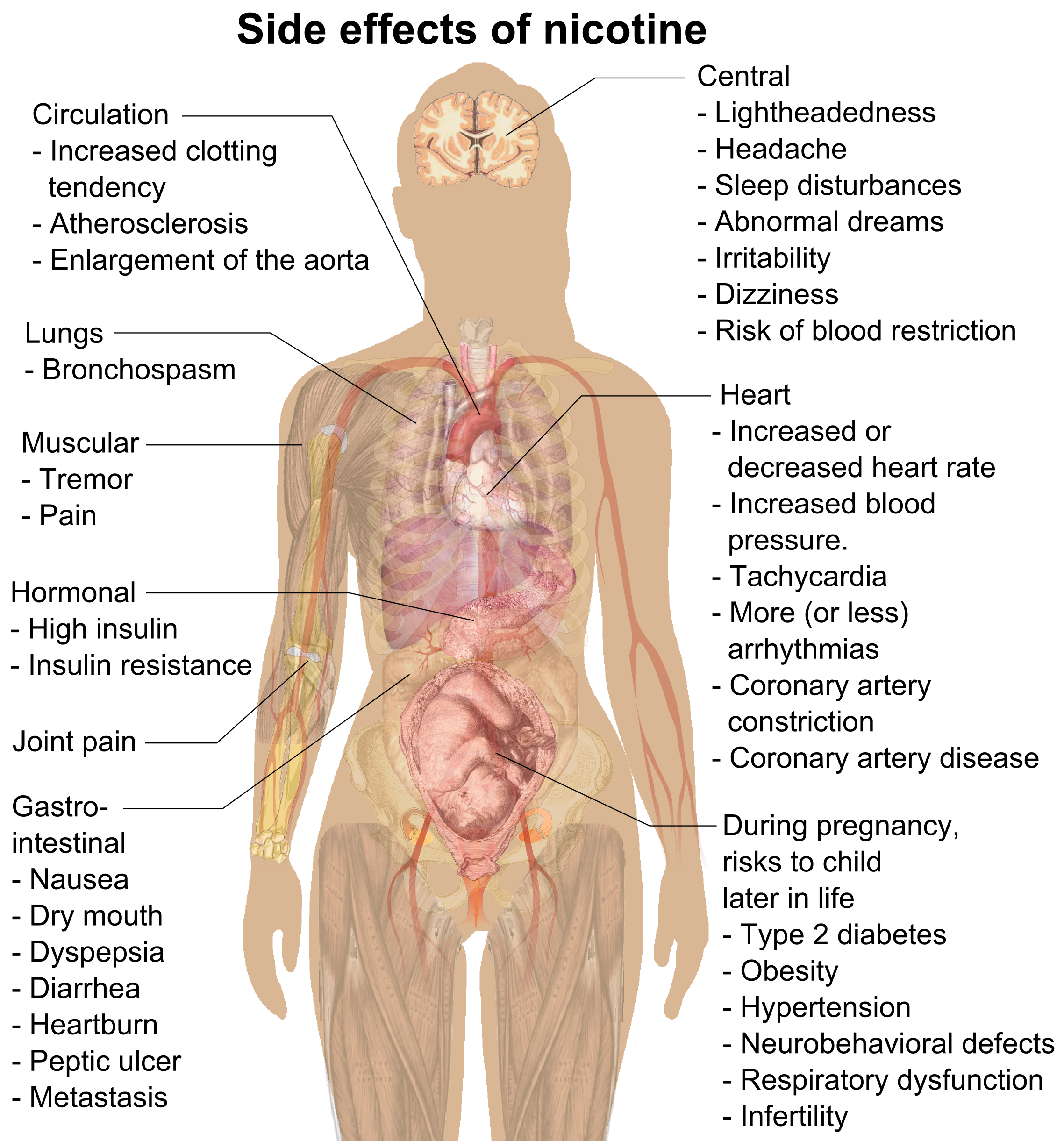|
Domperidone
Domperidone, sold under the brand name Motilium among others, is a dopamine antagonist medication which is used to treat nausea and vomiting and certain gastrointestinal problems like gastroparesis (delayed gastric emptying). It raises the level of prolactin in the human body and is used to induce and promote breast milk production. It may be taken by mouth or rectally. Side effects of domperidone include headache, dry mouth, abdominal cramps, diarrhea, and elevated prolactin levels. Secondary to increased prolactin levels, breast changes, milk outflow, menstrual irregularities, and hypogonadism can occur. Domperidone may also cause QT prolongation and has rarely been associated with serious cardiac complications such as sudden cardiac death. However, the risks are small and occur more with high doses. Domperidone acts as a peripherally selective antagonist of the dopamine D2 and D3 receptors. Due to its low entry into the brain, the side effects of do ... [...More Info...] [...Related Items...] OR: [Wikipedia] [Google] [Baidu] |
Breast Milk
Breast milk (sometimes spelled as breastmilk) or mother's milk is milk produced by mammary glands located in the breast of a human female. Breast milk is the primary source of nutrition for newborns, containing fat, protein, carbohydrates (lactose and human milk oligosaccharides) and variable minerals and vitamins. Breast milk also contains substances that help protect an infant against infection and inflammation, whilst also contributing to healthy development of the immune system and gut microbiome. Uses and methods of consumption The World Health Organization recommends exclusive breastfeeding for the first six months of life, with solids gradually being introduced around this age when signs of readiness are shown. Supplemented breastfeeding is recommended until at least age two and then for as long as the mother and child wish. Some newborn babies that are alert and healthy have the ability to latch on to the mother's breast within one hour of birth, however, on a globa ... [...More Info...] [...Related Items...] OR: [Wikipedia] [Google] [Baidu] |
Dopamine Antagonist
A dopamine antagonist, also known as an anti-dopaminergic and a dopamine receptor antagonist (DRA), is a type of drug which blocks dopamine receptors by receptor antagonism. Most antipsychotics are dopamine antagonists, and as such they have found use in treating schizophrenia, bipolar disorder, and stimulant psychosis. Several other dopamine antagonists are antiemetics used in the treatment of nausea and vomiting. Receptor pharmacology Dopamine receptors are all G protein–coupled receptors, and are divided into two classes based on which G-protein they are coupled to. The D1-like class of dopamine receptors is coupled to Gαs/olf and stimulates adenylate cyclase production, whereas the D2-like class is coupled to Gαi/o and thus inhibits adenylate cyclase production. D1-like receptors: D1 and D5 D1-like receptors – D1 and D5 are always found post-synaptically. The genes coding these receptors lack introns, so there are no splice variants. D1 receptors * D1 receptors ... [...More Info...] [...Related Items...] OR: [Wikipedia] [Google] [Baidu] |
Lactation
Lactation describes the secretion of milk from the mammary glands and the period of time that a mother lactates to feed her young. The process naturally occurs with all sexually mature female mammals, although it may predate mammals. The process of feeding milk in all animals (including humans) is called ''nursing'', and in humans it is also called '' breastfeeding''. Newborn infants often produce some milk from their own breast tissue, known colloquially as witch's milk. In most species, lactation is a sign that the female has been pregnant at some point in her life, although it can happen without pregnancy. Nearly every species of mammal has nipples; except for monotremes, egg-laying mammals, which instead release milk through ducts in the abdomen. In only one species of mammal, the Dayak fruit bat from Southeast Asia, is milk production a normal male function. ''Galactopoiesis'' is the maintenance of milk production. This stage requires prolactin. Oxytocin is cri ... [...More Info...] [...Related Items...] OR: [Wikipedia] [Google] [Baidu] |
Oral Administration
Oral administration is a route of administration where a substance is taken through the mouth. Per os abbreviated to P.O. is sometimes used as a direction for medication to be taken orally. Many medications are taken orally because they are intended to have a systemic effect, reaching different parts of the body via the bloodstream, for example. Oral administration can be easier and less painful than other routes, such as injection. However, the onset of action is relatively low, and the effectiveness is reduced if it is not absorbed properly in the digestive system, or if it is broken down by digestive enzymes before it can reach the bloodstream. Some medications may cause gastrointestinal side effects, such as nausea or vomiting, when taken orally. Oral administration can also only be applied to conscious patients, and patients willing and able to swallow. Terminology ''Per os'' (; ''P.O.'') is an adverbial phrase meaning literally from Latin "through the mouth" or "by mouth ... [...More Info...] [...Related Items...] OR: [Wikipedia] [Google] [Baidu] |
Gastric Emptying
Gastrointestinal physiology is the branch of human physiology that addresses the physical function of the gastrointestinal (GI) tract. The function of the GI tract is to process ingested food by mechanical and chemical means, extract nutrients and excrete waste products. The GI tract is composed of the alimentary canal, that runs from the mouth to the anus, as well as the associated glands, chemicals, hormones, and enzymes that assist in digestion. The major processes that occur in the GI tract are: motility, secretion, regulation, digestion and circulation. The proper function and coordination of these processes are vital for maintaining good health by providing for the effective digestion and uptake of nutrients. Motility The gastrointestinal tract generates motility using smooth muscle subunits linked by gap junctions. These subunits fire spontaneously in either a tonic or a phasic fashion. Tonic contractions are those contractions that are maintained from several minutes up t ... [...More Info...] [...Related Items...] OR: [Wikipedia] [Google] [Baidu] |
Prolactin
Prolactin (PRL), also known as lactotropin, is a protein best known for its role in enabling mammals to produce milk. It is influential in over 300 separate processes in various vertebrates, including humans. Prolactin is secreted from the pituitary gland in response to eating, mating, estrogen treatment, ovulation and nursing. It is secreted heavily in pulses in between these events. Prolactin plays an essential role in metabolism, regulation of the immune system and pancreatic development. Discovered in non-human animals around 1930 by Oscar Riddle and confirmed in humans in 1970 by Henry Friesen, prolactin is a peptide hormone, encoded by the ''PRL'' gene. In mammals, prolactin is associated with milk production; in fish it is thought to be related to the control of water and salt balance. Prolactin also acts in a cytokine-like manner and as an important regulator of the immune system. It has important cell cycle-related functions as a growth-, differentiating- and a ... [...More Info...] [...Related Items...] OR: [Wikipedia] [Google] [Baidu] |
Medicines And Healthcare Products Regulatory Agency
The Medicines and Healthcare products Regulatory Agency (MHRA) is an executive agency of the Department of Health and Social Care in the United Kingdom which is responsible for ensuring that medicines and medical devices work and are acceptably safe. The MHRA was formed in 2003 with the merger of the Medicines Control Agency (MCA) and the Medical Devices Agency (MDA). In April 2013, it merged with the National Institute for Biological Standards and Control (NIBSC) and was rebranded, with the MHRA identity being used solely for the regulatory centre within the group. The agency employs more than 1,200 people in London, York and South Mimms, Hertfordshire. Structure The MHRA is divided into three main centres: * MHRA Regulatory – the regulator for the pharmaceutical and medical devices industries * Clinical Practice Research Datalink – licences anonymised health care data to pharmaceutical companies, academics and other regulators for research * National Institute for Bi ... [...More Info...] [...Related Items...] OR: [Wikipedia] [Google] [Baidu] |
Rectal
The rectum is the final straight portion of the large intestine in humans and some other mammals, and the gut in others. The adult human rectum is about long, and begins at the rectosigmoid junction (the end of the sigmoid colon) at the level of the third sacral vertebra or the sacral promontory depending upon what definition is used. Its diameter is similar to that of the sigmoid colon at its commencement, but it is dilated near its termination, forming the rectal ampulla. It terminates at the level of the anorectal ring (the level of the puborectalis sling) or the dentate line, again depending upon which definition is used. In humans, the rectum is followed by the anal canal which is about long, before the gastrointestinal tract terminates at the anal verge. The word rectum comes from the Latin ''rectum intestinum'', meaning ''straight intestine''. Structure The rectum is a part of the lower gastrointestinal tract. The rectum is a continuation of the sigmoid colon ... [...More Info...] [...Related Items...] OR: [Wikipedia] [Google] [Baidu] |
Gastrointestinal Symptom
Gastrointestinal diseases (abbrev. GI diseases or GI illnesses) refer to diseases involving the gastrointestinal tract, namely the oesophagus, stomach, small intestine, large intestine and rectum, and the accessory organs of digestion, the liver, gallbladder, and pancreas. Oral disease The oral cavity is part of the gastrointestinal system and as such the presence of alterations in this district can be the first sign of both systemic and gastrointestinal diseases. By far the most common oral conditions are plaque-induced diseases (e.g., gingivitis, periodontitis, dental caries). Oral symptoms can be similar to lesions occurring elsewhere in the digestive tract, with a pattern of swelling, inflammation, ulcers, and fissures. If these signs are present, then patients are more likely to also have anal and esophageal lesions and experience other extra-intestinal disease manifestations. Some diseases which involve other parts of the GI tract can manifest in the mouth, alone ... [...More Info...] [...Related Items...] OR: [Wikipedia] [Google] [Baidu] |
Side Effect
In medicine, a side effect is an effect, whether therapeutic or adverse, that is secondary to the one intended; although the term is predominantly employed to describe adverse effects, it can also apply to beneficial, but unintended, consequences of the use of a drug. Developing drugs is a complicated process, because no two people are exactly the same, so even drugs that have virtually no side effects, might be difficult for some people. Also, it is difficult to make a drug that targets one part of the body but that does not affect other parts, the fact that increases the risk of side effects in the untargeted parts. Occasionally, drugs are prescribed or procedures performed specifically for their side effects; in that case, said side effect ceases to be a side effect and is now an intended effect. For instance, X-rays were historically (and are currently) used as an imaging technique; the discovery of their oncolytic capability led to their employ in radiotherapy (ablation of ... [...More Info...] [...Related Items...] OR: [Wikipedia] [Google] [Baidu] |






